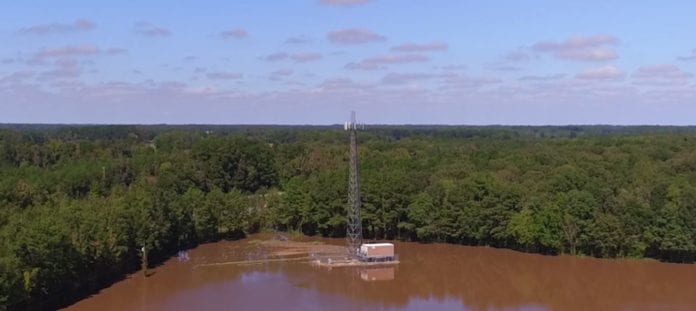The communication industry is already benefiting from the use of drones. Tower climbing is seen as one of the most dangerous jobs and telecommunication operators can avoid risks through the use of drones for telecommunications tower inspection. Commercial drones are changing the way operators are auditing and inspecting wireless infrastructure by enabling a safer collection of high-resolution imagery and video of tower structures and equipment.
Through the use of commercial drones, telecom operators can cut costs as they can reduce the use of helicopters and other small aircraft to inspect telecommunications assets. Drones also reduce the need for workers to climb telecommunications towers to perform routine audits and inspections. Drones used for tower inspection also allow operators to quickly identify and verify tower equipment specifications and damage.
A number of companies are already offering operators drone solutions for tower inspection. One of these firms is Airware, which is offering a drone solution with cloud-based inspection planning, commercial operator software, vehicles with sophisticated autonomy and onboard sensors, cloud data processing, analytics and reporting all within a workflow designed to enable companies to integrate aerial data into their existing business processes and systems.
AT&T is using commercial drones for telecommunications tower inspections, having successfully carried out a trial in 2016, and said it was planning to implement drones in its network operations by the end of last year.
Art Pregler, director of national mobility systems at AT&T, previously told RCR Wireless News the implementation will allow the telco to reduce risks associated with tower climbing.
“Every time we use a drone it’s just one less tower climb,” Pregler said. “Every tower climb that we can save provides a safer situation or less opportunity for potential injury.”
Pregler does not see drones completely replacing tower climbers, but he does believe drones will lead to a more efficient use of climbers over time.
AT&T works with a number of vendors providing drone services, and Pregler believes the work AT&T is doing with these vendors could benefit other industries in the future. He hopes AT&T can leverage not only its cellular network but also its network of drone vendors to help enterprise customers take advantage of the technology.
The telco said pre-installation inspections and birds’ nest evaluation are currently the two most common uses for drones at AT&T tower sites. Other important use cases include disaster recovery, post-installation inspections, stadium distributed antenna system drive testing and microwave testing.
Verizon Wireless used drones last year to help with cell site inspections in areas of North Carolina and South Carolina impacted by severe flooding from Hurricane Matthew. The telco used drones to inspect cell sites in difficult-to-reach locations and share information on any damaged equipment. The drones were able to both record and livestream high-definition video and high-resolution photographs of a cell site.
Last year, Verizon completed cell site inspection trials in New Jersey, providing 3D imagery and system performance data.

